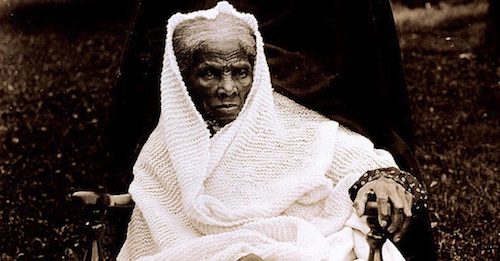In a conversation with her biographer, Harriet Tubman described her 1849 escape to freedom this way: “When I found I had crossed that line, I looked at my hands to see if I was the same person. There was such a glory over everything; the sun came like gold through the trees, and over the fields, and I felt like I was in heaven.”
In that quote, Tubman conceptualizes her own freedom, which she and two of her brothers risked everything to attain, in terms of her faith in the divine and recognition of beauty in the natural world. That first trait—her strong Christian faith—is widely recognized, both by people today and by Tubman’s abolitionist contemporaries. When she began to return to Maryland, leading more than 70 others out of slavery on at least 13 successful trips, she earned the biblical nickname “Moses.”
Less commonly acknowledged, though, is Tubman’s deep connection to the natural world.
“She was the original ‘outdoors woman,’” said Dana Paterra, Park Manager for the Harriet Tubman Underground Railroad State Park in Dorchester County, Maryland. “She was illiterate in the traditional sense, but she was very good at reading this landscape.”
Born around 1822, Tubman—or Araminta Ross, her birth name—spent much of her early life outdoors in the wetlands of Maryland’s Eastern Shore. Her parents were enslaved, and at the age of 7, the family’s owners hired Tubman out to check muskrat traps in the marshes. She also worked with her fathers and brothers in the timber fields and at nearby wharves.
“I’m not sure if you have any experience walking through salt marsh, but when you come across an area that has water in it, sometimes it’s really difficult to tell how deep that water is—you could sink up to your waist or it could just be a few inches,” Paterra explained. “She learned how to walk in the marsh.”
That skill was just one of many that Tubman perfected during a childhood and adolescence spent in the woods and wetlands. Those skills became crucial as she traversed the landscape from slaveholding Maryland to freedom across the Pennsylvania border. Paterra said Tubman “learned how to read the trees,” picking up on signifiers like moss, which grows on trees’ northern sides.
“She knew about the tidal cycles and when it was safest to use the low water crossing and walk through the marshes; she knew how to forage for food, how to find shelter in some of these large trees that are hollow on the inside,” Pattera said. “She was very adept at using nature to fuel her success as well as the success of others that she personally escorted to freedom.”
With the passage of the Fugitive Slave Act in 1850, the route along the Underground Railroad became even more dangerous. Still, Tubman kept returning to Maryland’s Eastern Shore to lead family members and others north—not just to Philadelphia and New York but also as far as Canada. Paterra said Tubman’s groups often traveled in winter, when the cover of night would last longest. Like many enslaved people who escaped north, Tubman learned to read the night sky, seeking out the North Star and reading constellations like a map.
Tubman also famously used bird calls, particularly the hoot of an owl, as signals—unnoticeable to any slave catchers waiting in the dark—to the people she traveled with.
“I was the conductor of the Underground Railroad for eight years, and I can say what most conductors can’t say: I never ran my train off the track and I never lost a passenger,” Tubman said at a women’s suffrage convention in 1896.
In addition to foraging for food, Tubman knew how to use plants for healing and other needs, such as quieting infants during times when silence meant survival. That botanical expertise would also serve her well during the Civil War, when she served as nurse. Later, her intimate knowledge of the landscape—including the mid-Atlantic region’s many rivers and streams—became a vital asset to the Union when she served as a spy.
Today, some who work to preserve cultural and natural resources related to Tubman’s story see her intimate connection to nature as a key piece of her legacy. That’s especially true, Paterra said, at the Harriet Tubman Underground Railroad State Park.
“When we can connect people to Tubman’s story through a landscape and they can actually see it—you know, they’re seeing what Tubman saw,” Paterra said. “It creates a very powerful personal connection.”



